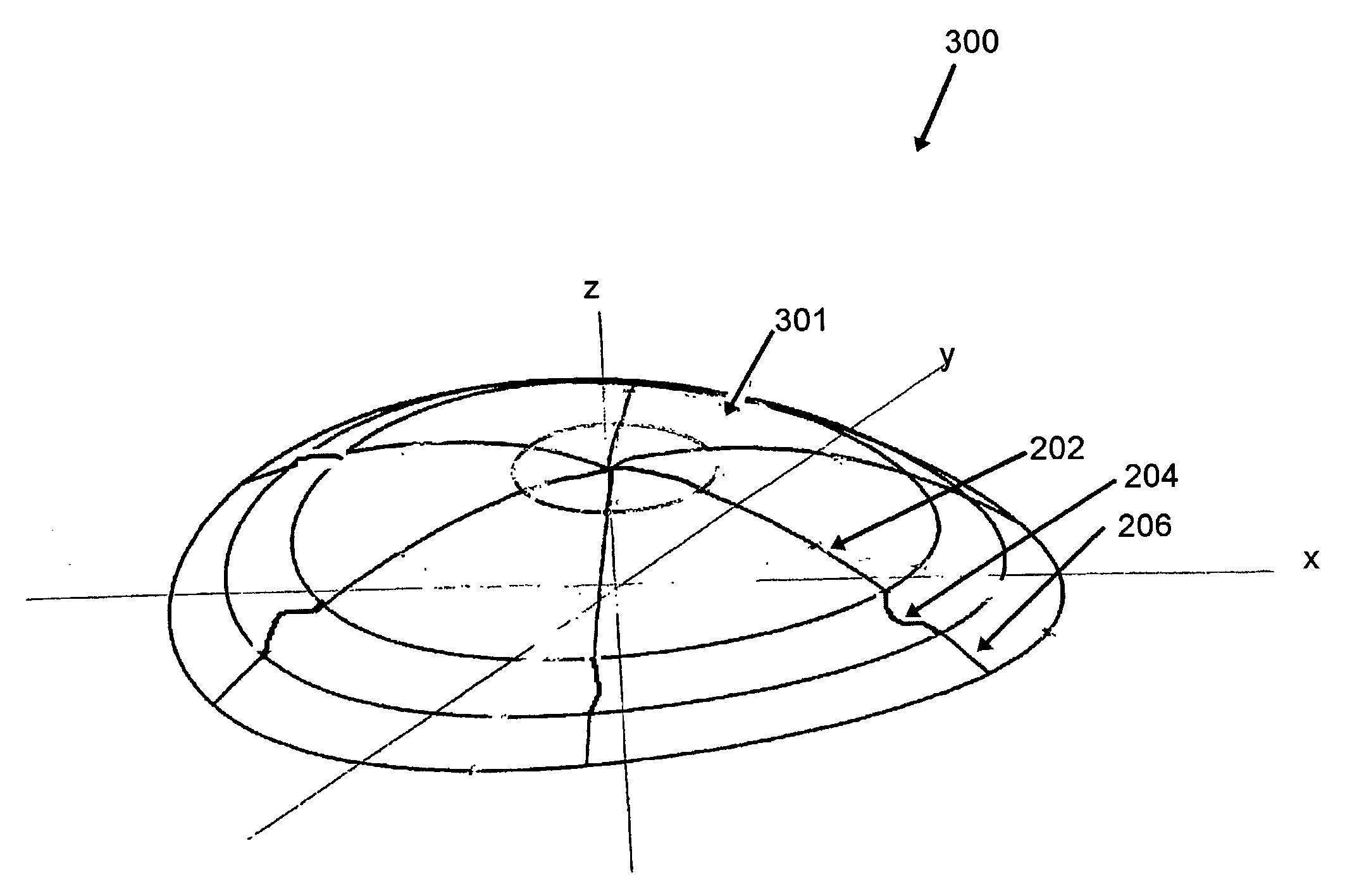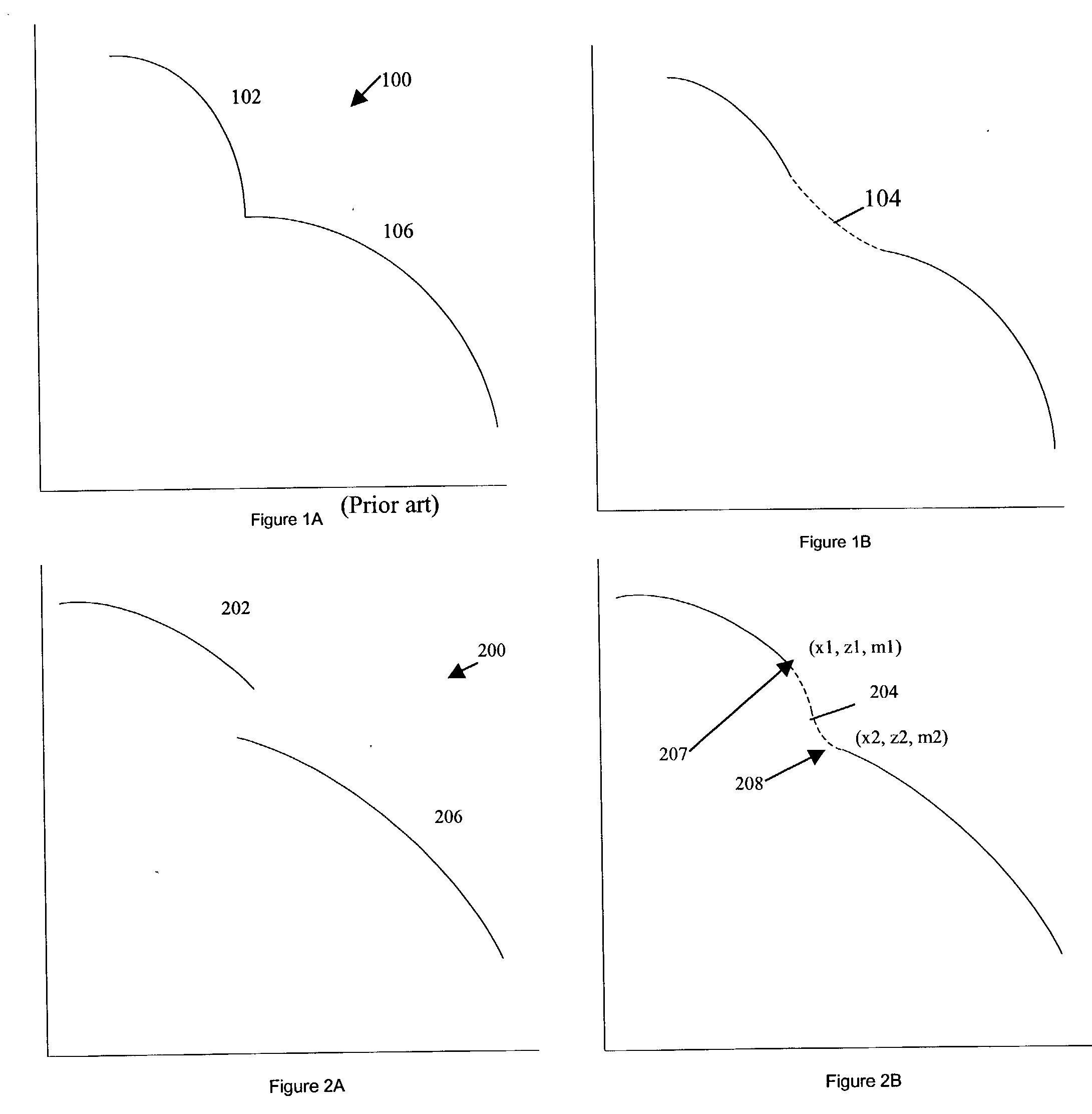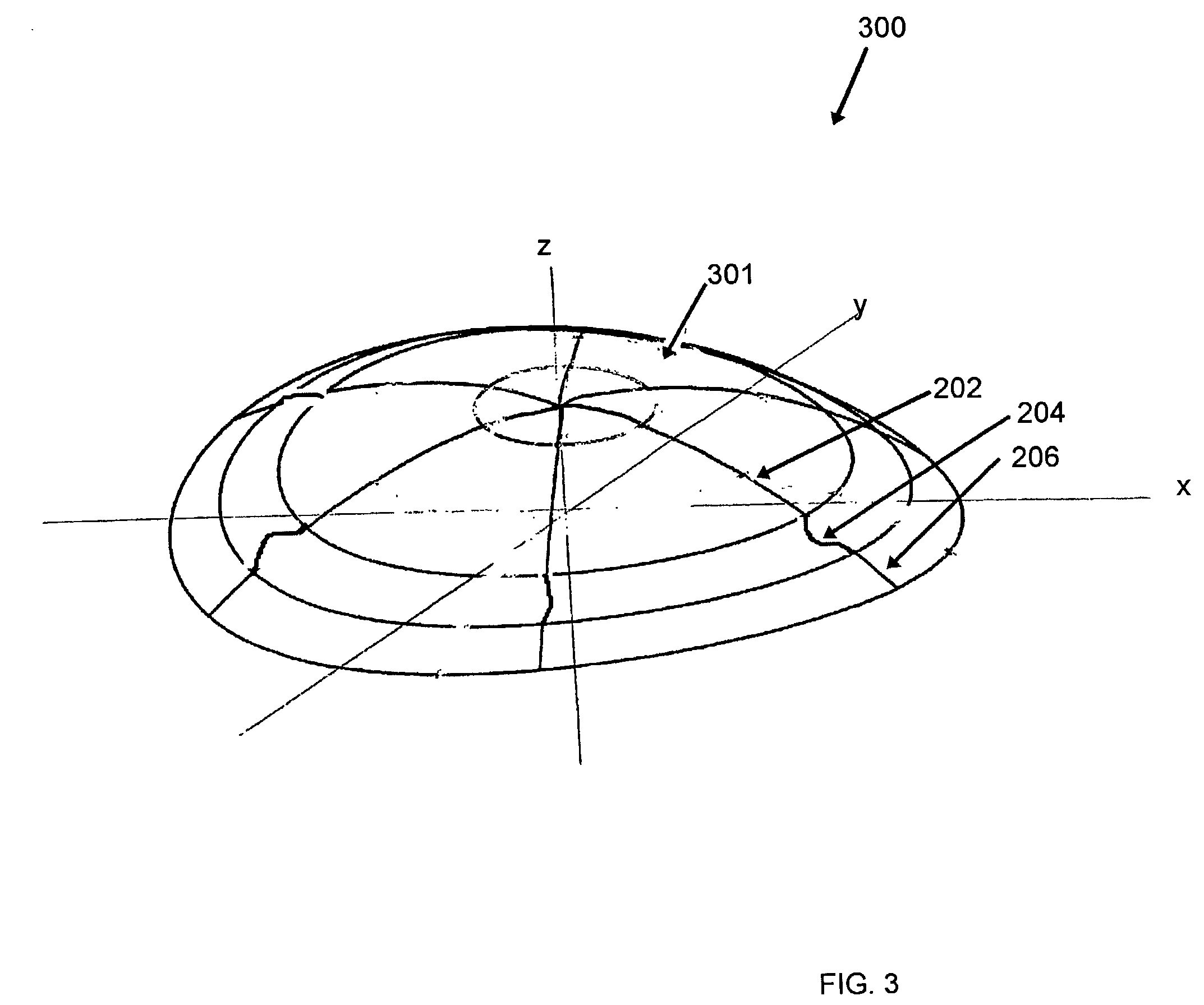Smoothly blended optical surfaces
a technology of optical surfaces and optical surfaces, applied in the field of optical design of lens surfaces and ophthalmic lens manufacture, can solve the problems of complicated mathematical techniques and associated computer power, complicated, and inability to achieve the effect of high-order algorithms,
- Summary
- Abstract
- Description
- Claims
- Application Information
AI Technical Summary
Benefits of technology
Problems solved by technology
Method used
Image
Examples
Embodiment Construction
[0025] With reference to FIGS. 2A, 2B, and 3, an embodiment of the invention is directed to an optical lens and, preferably, to an ophthalmic custom contact lens 300 for vision correction, in which the anterior and / or posterior surface of the lens is ultimately a non-rotationally symmetric surface 301. FIG. 2A illustrates a meridional cross sectional profile 200 of two disparately shaped, radially adjacent zones 202, 206 that must be incorporated into the surface 301 of the lens. As shown in FIG. 2B, dotted line 204 represents the cross sectional profile of a blend zone 204 that smoothly and continuously joins disparate zones 202 and 206. According to the invention, the blend zone profile 204 is defined by a single third-order polynomial expressed by equation (1) as follows:
z(x)=a.sub.1+a.sub.2.multidot.x+a.sub.3.multidot.x.sup.2+a.sub.4.multidot.-x.sup.3 (1)
[0026] where z(x) is the sag of the blend profile. It is expected that the geometry of each of the zone profiles 202, 206 is q...
PUM
 Login to View More
Login to View More Abstract
Description
Claims
Application Information
 Login to View More
Login to View More - R&D
- Intellectual Property
- Life Sciences
- Materials
- Tech Scout
- Unparalleled Data Quality
- Higher Quality Content
- 60% Fewer Hallucinations
Browse by: Latest US Patents, China's latest patents, Technical Efficacy Thesaurus, Application Domain, Technology Topic, Popular Technical Reports.
© 2025 PatSnap. All rights reserved.Legal|Privacy policy|Modern Slavery Act Transparency Statement|Sitemap|About US| Contact US: help@patsnap.com



